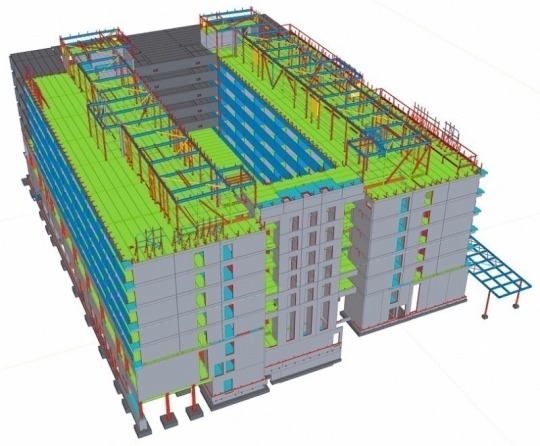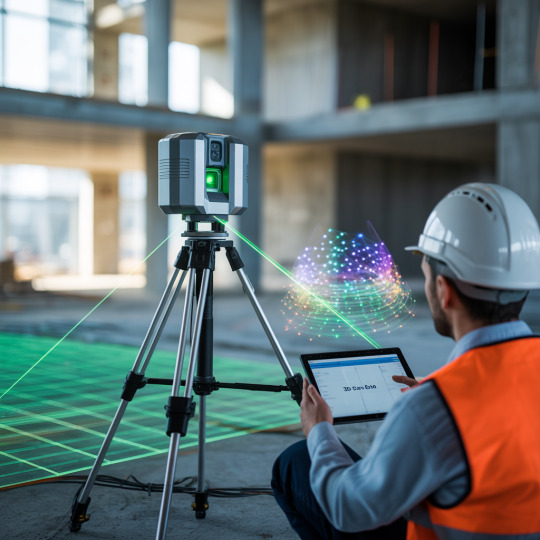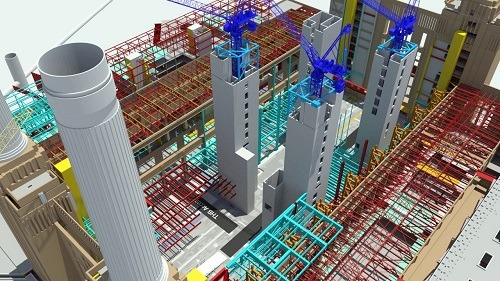#bim structural modeling
Explore tagged Tumblr posts
Text
Enhancing Safety with BIM Services in Structural Projects

BIM is a groundbreaking technology in the AEC sector. However, safety is always the prime concern for professionals in every construction project. BIM services provide safety analysis and planning for structural projects and ensure reduced risk of accidents and injuries.
#structural bim services#revit structural modeling#bim structural modeling#bim modeling revit#bim modeling company#bim structural modeling services#structural engineering services#outsource structural bim services
2 notes
·
View notes
Video
youtube
How dynamo model warehouse in 30 minutes? | Modeling warehouse with dynamo
#youtube#dynamo#revitdynamo#bimrevit#structure#revit#steelstructure#bim#autodesk revit#building information modeling#bim automation#warehouse
2 notes
·
View notes
Text
BIM Structural Modeling Services – What’s The Need For It?

Did you take a smart step for your building with Bim Structural Modeling Services UAE? It’s a good idea to go every day! Ensuring precision, cost efficiency and speed are critical factors in the construction industry. Because various complexities that most professionals face all the time.
#Bim Service Providers In India#Architecture Bim Software#Bim Architectural Services#Structural Bim Services#Structural Bim Modeling Services#Bim Structural Detailing Services#Mepf Bim Services#Mep Fabrication Drawings#Infrastructure Bim Services India#Infrastructure Bim Modeling Services#4D Construction Sequencing#Construction Sequencing With 4D Bim#4D Bim In Construction#5D Bim Cost Estimation Quantity Take-Offs#Bim Quantity Take-Off Services#7D Bim Asset Information Model#Point Cloud To Bim Services#Cad To Bim Migration Services#Construction Documentation Set India#Facility Management Service Providers
0 notes
Text
Structural Engineering CompanyAs a leading Structural Engineering Company, hiQdesigninc delivers comprehensive structural solutions with precision and reliability. We specialize in steel design, detailing, and consulting services for projects of all sizes. Our engineering team ensures every structure is safe, functional, and meets all standards. Build smarter with hiQdesigninc’s expertise. For more details visit here:- https://hiqdesigninc.com/index.php
#structural engineering firm in arizona#steel structural design in arizona#tekla structural steel detailing in arizona#structural engineering company in arizona#bim modeling in arizona
0 notes
Text
Architectural Laser Scanning for Building Renovation
3D Scanning Technology Revolutionizing Renovation Projects
In recent years, 3D laser scanning has become a game-changer for building renovation. By capturing highly accurate digital records of existing structures, this advanced technology streamlines the renovation process from planning through construction.
Architectural laser scanning not only accelerates project timelines—reducing them by up to 80%—but also plays a crucial role in preserving historical architectural details. Its precision and efficiency are redefining how architects, engineers, and contractors approach renovation projects.
Understanding Laser Scanning Technology


Laser scanning technology operates by emitting laser beams that reflect off surfaces and return to the scanner, capturing millions of data points known as "point clouds."
These dense point clouds represent the geometry of the scanned environment in 3D with a typical accuracy range of 2-3mm.
Key capabilities include:
Capturing comprehensive spatial relationships, material conditions, and architectural features.
Recording manufacturer-specific details such as door and window dimensions, HVAC equipment, and more.
Seamless integration with BIM (Building Information Modeling) and CAD platforms, enhancing digital workflows.
Delivering rich geographic and architectural data used for precise modeling and analysis.
Key Benefits for Renovation Projects
Laser scanning offers several distinct advantages over traditional surveying methods, especially for renovation and retrofit projects:
Enhanced Safety: Reduces the need for physical access to hazardous or hard-to-reach areas.
Speed: Approximately 40% faster than traditional hand-measuring or manual survey methods.
Accuracy: Delivers near-exact documentation of existing conditions, essential for accurate design and construction.
Historical Preservation: Ideal for capturing intricate details in heritage buildings, ensuring their preservation during renovations.
Reduced Errors: Minimizes on-site measurement mistakes, reducing costly rework.
Enhanced Project Planning
High-resolution point cloud data enables architects and engineers to begin the renovation process with a complete understanding of the existing structure. Benefits include:
Detailed site analysis with reliable structural data.
Insight into existing limitations, constraints, and irregularities.
Early detection of structural issues, such as sagging beams or misaligned foundations.
Creation of accurate as-built documentation for use across design disciplines.
Helps reduce rework and avoid costly surprises during construction.
Streamlining Design & Construction
One of the major strengths of architectural laser scanning is its ability to streamline design and construction coordination:
Seamless integration with BIM and CAD software platforms like Revit, AutoCAD, and Navisworks.
Provides a shared, accurate data environment for all stakeholders to collaborate.
Reduces change orders by up to 35% by ensuring that the design is aligned with real-world site conditions.
Facilitates complex structural modifications with confidence and precision.
Speeds up decision-making by providing detailed visual references and data-backed models.
Quality Assurance & Compliance
Laser scanning plays a pivotal role in quality control and ensuring compliance during renovation:
Verifies that construction aligns with architectural and structural specifications.
Helps teams ensure compliance with building codes and regulations.
Accurately documents as-built conditions for comparison against original designs.
Detects deviations or discrepancies between planned and actual structures.
Supports structural analysis and validation, ensuring safety and long-term performance.
Case Study: Historical Building Preservation
A notable application of laser scanning is in the renovation of historical buildings:
Enables precise documentation of delicate or intricate architectural features like moldings, columns, and cornices.
Supports accurate alignment of new structural elements with the original architecture.
Offers digital preservation of heritage details, ensuring they are retained for future generations.
Allows for virtual design testing using 3D models before making any physical changes.
Minimizes on-site disruption, making the scanning process less invasive than traditional surveys.
Implementation Process
The implementation of a laser scanning workflow typically includes the following steps:
Initial Site Assessment: Determines scanning scope and project requirements.
Scanner Placement Strategy: Ensures full coverage of the building, interior and exterior.
Data Collection & Point Cloud Generation: Field scanning produces millions of precise data points.
Data Processing & Integration: Point clouds are cleaned, registered, and integrated into BIM or CAD systems.
Ongoing Reference: The scan data remains available throughout the renovation to resolve design or construction queries.
ROI & Cost Benefits
Architectural laser scanning offers an impressive return on investment for renovation projects:
Reduces overall project timelines by up to 30%, allowing quicker project delivery.
Helps avoid expensive design changes mid-project by catching issues early.
Cuts labor costs for initial surveying by approximately 50%.
Prevents costly rework by providing exact existing conditions before construction starts.
Creates lasting digital documentation, useful for ongoing maintenance and facility management.
Conclusion: Transforming Renovation Projects
Architectural laser scanning is transforming the renovation landscape by introducing a new level of accuracy, efficiency, and insight. By providing:
Unprecedented documentation precision
Improved decision-making based on real-world data
Clear, consistent information for all stakeholders
Significant reductions in time and cost
Preservation of both structural integrity and aesthetic value
…it is rapidly becoming an essential tool in modern building renovation. Whether working on a historical structure or a commercial upgrade, 3D laser scanning ensures the highest level of planning, execution, and project success.
#building design#architecture#architectural laser scanning#historical structure#3d laser scanning#as built documentation#bim#building information modeling
0 notes
Text
We provide top-tier Structural BIM Services to streamline your design, coordination, and construction processes. Our expert team delivers highly detailed 3D models, clash detection, steel detailing, and structural analysis, ensuring precision and efficiency in every project. Our structural BIM services in the USA helps both design and construction firms to produce the final CDs set to facilitate coordination and fabrication process.
0 notes
Text

Revit Structural Modeling Services
Transform your construction projects with our expert Revit Structural Modeling Services! We provide accurate, detailed, and efficient structural designs using the latest Revit software. Our team ensures seamless integration, enhanced collaboration, and minimized errors, delivering high-quality results for your building projects. Let us help you bring your vision to life with precision and efficiency.
#Revit Structural Modeling Services#Structural 3d Modeling Services#Structural BIM Modeling Services#3d Structural Model
0 notes
Text
Top the best Structural BIM Engineering Services in Alabama, USA

Steel Construction Detailing offer top-tier Structural BIM Engineering Services to clients in Alabama, USA and beyond. With our expert team, we provide comprehensive solutions that ensure the successful completion of structural projects of any scale. From Structural BIM Shop Drawing Services to Revit Structural Modeling Services, we cover all aspects of BIM engineering to meet the highest standards in the industry. Whether you need detailed drawings, 3D models, or a reliable BIM outsourcing partner, we’re here to support your project from inception to completion.We provide Structural BIM Engineering Services for a wide range of sectors, including residential, commercial, industrial, and infrastructural projects. Whether you are working on a small-scale residential building or a large commercial development, we have the expertise to deliver the right BIM solutions for your project.
Contact us today to learn more about how our Structural BIM Engineering Services can benefit your next project!
For More Details Visit our Website:
#Structural BIM Engineering Services#Structural BIM Shop Drawing Services#Structural BIM Designing Services#Structural BIM Drafting Services#Revit Structural Modeling Services#Structural BIM Outsourcing Services#Structural BIM Modeling Services#Structural BIM Engineering Company#Structural BIM Engineering Firm#USA
0 notes
Text
Get the Best Structural BIM Services Chicago, US AEC Industry

Elevate the operational efficacy of your structural project with Offshore Outsourcing India's best-in-class Structural BIM Services, where comprehensive structural engineering solutions are synergistically integrated with innovative structural design methodologies. Our team of highly skilled structural engineers employs cutting-edge BIM software to create detailed 3D Structural Models that include every structural element—such as beams, columns, and connections—ensuring accurate representation and precise measurements, thus reducing the risk of expensive errors through advanced clash detection algorithms. We create an environment of smooth and strong teamwork among various professionals, including architects, structural engineers, and builders, improving communication and coordination, leading to unmatched project performance and significant savings in time and money. Our dedication to achieving high Standards of Development (LOD) allows us to provide outstanding rebar detailing and thorough structural analysis, offering design and documentation services that meet and surpass industry standards and regulatory needs.
We Offer
Structural BIM CAD Services
BIM-Based Cost Estimation
4D BIM Scheduling
Structural BIM Modeling
BIM Models for Coordination
Structural BIM Shop Drawing Services
We provide precise and cost-effective Structural Engineering Services, including Structural Drawings for Architecture, Engineering, and Construction (AEC) clients worldwide, across North America, Europe, Africa, and Latin America. Our expertise spans structural analysis, steel detailing, and rebar shop drawings, delivering solutions for projects of all sizes and complexities—from towering urban skyscrapers to expansive infrastructure developments. We ensure our fabrication plans meet the highest standards of accuracy, focusing on load-bearing structures, foundation designs, and reinforcement detailing. With a global presence in key countries such as United Kingdom, France, Germany, Italy, Spain, Netherlands, Austria, Switzerland, Sweden, Denmark, Belgium, Finland, Poland, Czech Republic, United States, Canada, Brazil, Argentina, Mexico, United Arab Emirates, Qatar, Saudi Arabia, Kuwait, etc.
For more details click on the link below
#Structural BIM Modeling#Structural Modeling#BIM Outsourcing#United States#BIM#AEC#UAE#UK#Gerrmany#France#Denmark#Canada#Australia#Austria#Netherlands#Ireland#Finland#Sweden#Qatar#Saudi Arabia
0 notes
Text
#Bim#Bim Informationmodelling#Structural bim services#bim in construction building#information modeling#bim building information#modeling company#3d bim#bim engineering#3d modeling bim in construction industry#bim in architecture#Structure BIM modelling#BIM modelling
0 notes
Text
The Prominence of Structural BIM Services for Engineers

Structural BIM services offer various benefits, especially to structural engineers. The importance of structural BIM modeling in AEC projects eases the complex process, reduces rework, and promotes cost savings. Understand structural BIM services for engineers in detail.
#structural bim services#revit structural modeling#bim structural modeling#bim modeling revit#bim modeling company#bim structural modeling services#structural engineering services#outsource structural bim services
1 note
·
View note
Text

Elevate your structural projects with Silicon Engineering Consultant's premier Structural BIM Services In Chicago.
Visit Us:
#Structural 3D Modeling#Schematic Design Documentation#Structural Drafting and Detailing#Revit 3D Modeling#As-Built Modeling and Drawing#Structural BIM Design and Drafting Services#Structural BIM CAD Services#BIM Modeling Services#Structural BIM Modeling Services#Structural BIM Engineering Services
1 note
·
View note
Text
Why UAE Contractors Are Turning to 4D BIM for Smarter Project Management

Among the current technology reworking the enterprise is 4D BIM in Construction UAE a powerful innovation that adds the size of time to traditional three-D Building Information Modeling.
#Bim Services Provider#Bim Service Providers In India#Architectural Bim Services India#Architectural Bim Modeling Services#Structural Bim Services India#Structural Bim Modeling Services#Bim Structural Modeling Services#Mep Bim Services#Mepf Bim Modeling Services#Infrastructure Bim Software#Infrastructure Bim Services India#4D Construction Sequencing#4D Bim Software#5D Quantity Take-Off#5D Bim Cost Estimation Quantity Take-Offs#Building Information Modelling 6D#7D Bim For Facilities Management#Point Cloud To Bim Software#Benefits Of Point Cloud Scan To Bim#Cad To Bim Modeling Services#Construction Tender Documentation#Construction Documentation Checklist#Cobie Buildings Designing#Facility Management Service Providers#Structural Precast Services India#Revit Fabrication Service India
0 notes
Text
BIM Modeling: The Digital Backbone of Modern Construction
One of the biggest technological advancements in the construction industry is BIM Modeling (Building Information Modeling), and HIQ Design Inc is at the forefront of its application. Through intelligent 3D modeling, BIM enables better planning, coordination, and decision-making throughout the project lifecycle. For more details visit here:- https://hiqdesigninc.wixsite.com/hiqdesigninc/post/structural-engineering-company
#Structural Contractors#Structural Engineering Company#Tekla Structural Steel Detailing#BIM Modeling
0 notes
Text

BIM Process & Lifecycle In Building Construction
Building Information Modeling encompasses the entire process of planning, designing, constructing, operating, and maintaining a building or infrastructure project using a digital representation.
3D Planning and Design
Building Information Modeling (BIM) begins with the creation of a detailed 3D model that includes architectural, structural, and MEP (Mechanical, Electrical, Plumbing) components. This phase allows for visualization, analysis, and optimization of the design before construction begins.
Operation and Maintenance
After construction, the BIM model serves as a valuable resource for managing the building throughout its lifecycle. Facility managers use the model for maintenance, repairs, and renovations, ensuring the building operates efficiently.
Project Collaboration
BIM facilitates seamless collaboration among all stakeholders, including architects, engineers, contractors, and owners. The shared model ensures everyone is on the same page, reducing errors and improving communication.
Construction
During construction, the BIM model guides the building process, providing detailed information on materials, timelines, and workflows. This enhances accuracy, reduces waste, and ensures the project stays on schedule and within budget.
By integrating these stages, BIM enhances collaboration, reduces costs, and improves the overall quality and sustainability of construction projects.
0 notes
Text
Enhancing Formwork Detailing: The Transformative Power of BIM Modeling for Structural Contractors

Introduction
In the realm of construction, precision and efficiency are paramount. Structural contractors are tasked with the responsibility of translating architectural designs into tangible structures, often facing challenges in formwork detailing. Formwork, the temporary mold into which concrete is poured, demands meticulous planning and execution to ensure structural integrity and cost-effectiveness. Here's where Building Information Modeling (BIM) steps in as a game-changer, revolutionizing formwork detailing processes and empowering contractors to achieve unparalleled efficiency and accuracy.
Understanding Formwork Detailing
Formwork, often referred to as shuttering, serves as the temporary mold into which concrete is poured and allowed to harden. It's a critical component in concrete construction, influencing project timelines, costs, and structural integrity. Formwork detailing involves meticulous planning and design to ensure the formwork accurately conforms to the desired shape and dimensions of the concrete element being cast. Any inaccuracies or inefficiencies in formwork detailing can lead to delays, cost overruns, and compromised quality.
The BIM Advantage
Enter Building Information Modeling (BIM), a revolutionary technology that has reshaped the landscape of the construction industry. BIM is a digital representation of the physical and functional characteristics of a building, offering a comprehensive platform for collaborative design, visualization, and simulation. When applied to formwork detailing, BIM unlocks a myriad of benefits for structural contractors:
1. Enhanced Visualization and Planning
BIM enables contractors to visualize formwork designs in a 3D digital environment, providing a clear understanding of the structure's geometry and spatial relationships. With sophisticated modeling tools, contractors can simulate various formwork scenarios, optimizing layouts for efficiency and material utilization. This level of visualization facilitates early-stage problem-solving and informed decision-making, mitigating risks and minimizing costly errors during construction.
2. Accurate Quantity Takeoffs
One of the primary challenges in formwork detailing is accurately estimating material quantities. BIM streamlines this process by generating precise quantity takeoffs based on the digital model. By extracting data directly from the BIM environment, contractors can calculate the required formwork components with unparalleled accuracy, eliminating guesswork and potential overruns. This precision not only optimizes material procurement but also contributes to cost savings throughout the project lifecycle.
3. Seamless Collaboration and Coordination
BIM serves as a collaborative platform, facilitating seamless communication and coordination among project stakeholders. Structural engineers, architects, contractors, and subcontractors can work concurrently within the BIM environment, sharing real-time updates and feedback. This integrated approach fosters transparency and alignment throughout the formwork detailing process, minimizing conflicts and maximizing productivity. By breaking down silos and fostering collaboration, BIM ensures that everyone is on the same page, driving efficiency and synergy across the project team.
DISCUSS YOUR PROJECT REQUIREMENTS WITH OUR EXPERTISE: https://prototechsolutions.com/services/bim-modeling-services/
4. Clash Detection and Risk Mitigation
Formwork detailing involves intricate geometries and complex structural configurations, increasing the likelihood of clashes and interferences during construction. BIM's clash detection capabilities enable contractors to identify and resolve conflicts proactively, preventing costly rework and delays onsite. By simulating the formwork assembly within the digital model, contractors can anticipate potential clashes and design constraints, optimizing the construction sequence and minimizing disruption. This proactive approach to risk mitigation enhances project predictability and ensures smooth execution from design to delivery.
5. Iterative Design and Optimization
BIM empowers contractors to iterate on formwork designs iteratively, exploring various alternatives and optimizations before finalizing the construction plans. By leveraging parametric modeling and computational analysis, contractors can refine formwork layouts based on performance criteria, such as load-bearing capacity, material efficiency, and constructability. This iterative design process fosters innovation and continuous improvement, allowing contractors to achieve optimal solutions that balance technical requirements with project constraints. From complex geometries to challenging site conditions, BIM equips contractors with the tools and insights needed to tackle formwork detailing with confidence and efficiency.
6. Quantification and Cost Estimation
Another noteworthy advantage of BIM in formwork detailing is its ability to facilitate accurate quantification and cost estimation. BIM software enables automated takeoff procedures, extracting precise quantities of formwork materials based on the digital model. This data-driven approach eliminates the guesswork associated with manual quantity surveys and ensures that contractors procure the right amount of materials, reducing excess inventory and minimizing project costs. Additionally, BIM enables real-time cost tracking and analysis, empowering contractors to make informed decisions throughout the construction process.
7. Sustainability and Environmental Impact
In an era of increased emphasis on sustainability, BIM offers opportunities to minimize the environmental footprint of construction activities, including formwork detailing. By optimizing formwork designs for material efficiency and reducing waste, contractors can contribute to resource conservation and waste reduction efforts. Additionally, BIM enables lifecycle assessment and analysis, allowing stakeholders to evaluate the environmental impact of formwork materials and construction processes. By making informed decisions based on sustainability criteria, contractors can align formwork practices with green building principles and industry standards.
Conclusion:
In conclusion, BIM modeling represents a paradigm shift in how structural contractors approach formwork detailing. By harnessing the power of digital technology, contractors can enhance visualization, streamline design processes, and optimize construction workflows. From improved coordination and cost estimation to enhanced safety and sustainability, the benefits of BIM in formwork detailing are manifold. As the construction industry continues to evolve, embracing BIM as a fundamental tool for formwork detailing is essential for staying competitive and delivering projects of the highest quality. By embracing innovation and leveraging BIM capabilities, structural contractors can elevate formwork detailing to new heights, paving the way for a more efficient, resilient, and sustainable built environment.
#3D BIM MODELING#revit family creation#formwork detailing services#BIM modeling#structural contractors#formwork design#formwork detailing
0 notes